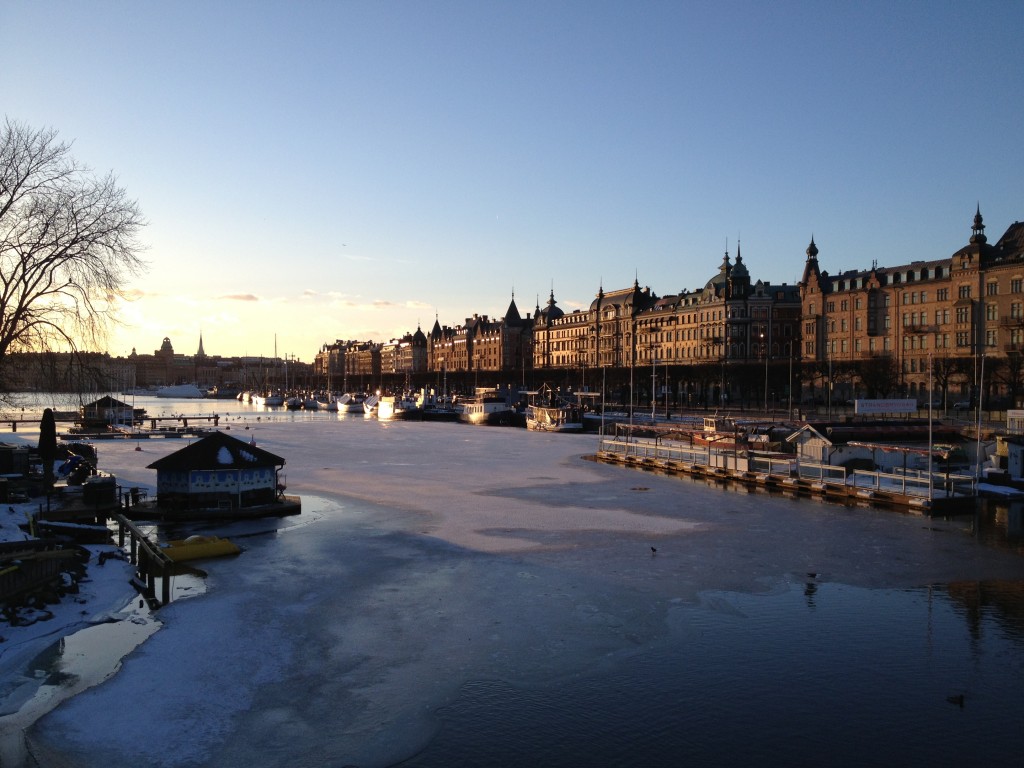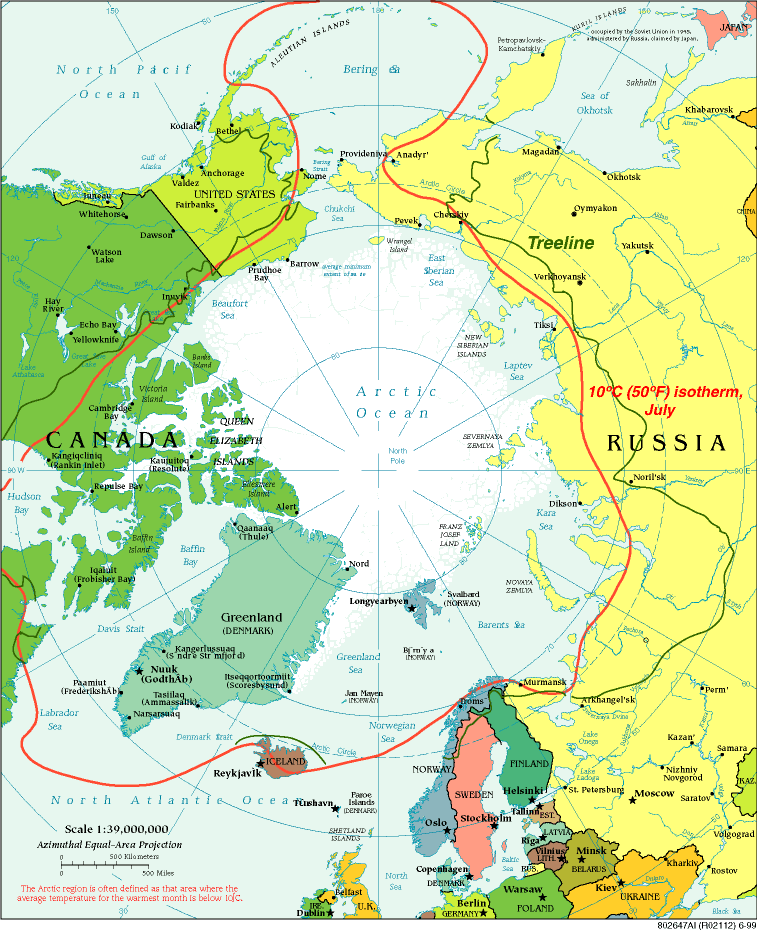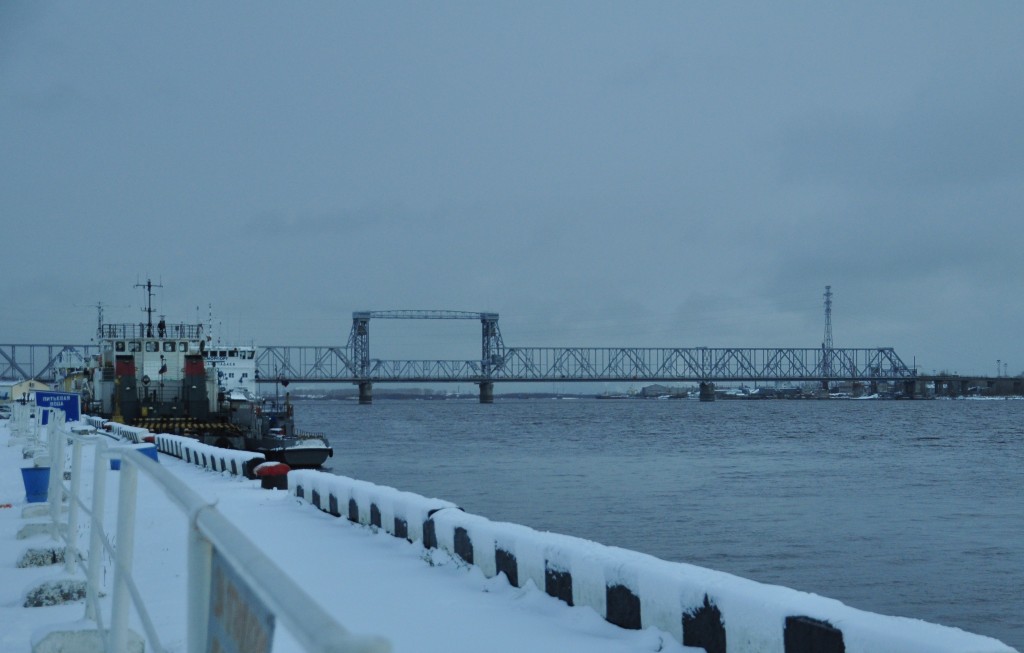The equatorial water flow mystery
The sink water spin mystery from DW_Global Ideas on Vimeo.
Our reporter Joanna was very surprised when she found out which way water drains away when she was filming at the Equatorial Line in Uganda. Can you guess what happened?
![]() read more
read more
Exploring the North (1): The Arctic circle

Freezing temperatures, darkness, vast icy landscapes – that’s what I’m expecting within the next days as I journey northwards through Sweden and Norway. Maybe those are just stereotypes I have as I travel towards the Artic circle (and actually even cross it into the Artic region). I’ll soon find out. But I’d like to take you along on my exciting journey.

Credit: Map courtesy The Perry-Castañeda Library Map Collection. Treeline added at NSIDC based on information from National Geographic 1983, Armstrong et al. 1978, and Young 1989.
What is so special about the Arctic circle?
The circle of 66,65° latitude (commonly) defined as the Arctic circle, above which the sun doesn’t rise or set for at least 24 hours a year. In fact, in most regions these states last for several month of the year. Additionally, temperatures can fall below -70 degree Celsius and usually do not rise higher than 10 degrees in summer. That may not sound very comforting. But, actually there are several animals, plant species (there are more than 400 flowers that can only be found North of the Arctic circle) and people who live and flourish here – traditionally as well as for research purposes.
Because living beings have to be well-adapted to such tough conditions in order to survive, the regions and its inhabitants are especially sensitive to changes due to global warming. Scientific measurements showed that temperatures in the polar regions are two to three times quicker than in other regions. That is why it is said to be the planet’s early warning system.
What’s next on this journey?
I’d like to show you how a relatively rich country like Sweden harnesses green energy sources – and why some people protest against it. In addition, I hope to introduce to you some non-human climate rescuers.
You can follow my journey here on the Global Ideas Blog and see my travel route on this map:
Journey to the Arctic circle auf einer größeren Karte anzeigen
(Green icons: been there, blue icons: places to visit later on)
Some like it hot… 2012 sets new record
So, 2012 is now officially the hottest year ever recorded in the US. It brought a record breaking drought, registering the hottest month ever and leading to record breaking grain prices and record breaking crop insurance fees. 2012 also produced super storm Sandy, which led to record breaking low pressure in the US Northeast and record breaking storm surges hitting New York City.
We found the frog
Though the team was not very optimistic we eventually did find a group of the frogs. They were living in the same trees where they were discovered a few months ago. They were not afraid of us. Though tiny they were amazing creatures. Their colors and detailed, flexible bodies were like nothing I had ever seen before. It was impossible not to be mesmerized by them and simply stare. They seemed so serene in their natural home. After watching them for a while we packed out things and left. We felt that we had trespassed long enough in their home and we went back to ours. We had found the frogs and gotten them on film. You can see them soon at Global Ideas!
Vaccination for everyone, the polar way
 “Have they cleared the landing strip?”, I asked my seat neighbour when our plane was about to land in the North Russian city of Archangelsk last wednesday. My seat was not on the window, all I could see was right in front of the small window: a lot of snowflakes twirling in the air. It is winter already. When we took off in Berlin in the morning, the autumn sun rose. “Yes, they did”, the colleague next to me answers. “There is less snow underneath our plane then aside us.” The plane slows down.
“Have they cleared the landing strip?”, I asked my seat neighbour when our plane was about to land in the North Russian city of Archangelsk last wednesday. My seat was not on the window, all I could see was right in front of the small window: a lot of snowflakes twirling in the air. It is winter already. When we took off in Berlin in the morning, the autumn sun rose. “Yes, they did”, the colleague next to me answers. “There is less snow underneath our plane then aside us.” The plane slows down.
The next morning, all the snow is thawed. A local man says: “It is quite mild for this time. Normally it is snowing already in middle of October.” Is it just freak weather or already climate change? I prefer not to ask that question.
It emerges that people in Archangelsk do not really believe in climate change: It’s not so bad, they say, all natural. That’s the undertone at a discussion panel on the German-Russian Media forum that is running at the moment in Archangelsk.
I am almost relieved, as a researcher from Northern Public Medical University says: “The existence of climate change is beyond all question”. But a second later I wince as she continues: “We are not interested in what is causing climate change. If humans are responsible … who knows.” It would be more important to think of the consequences and to protect the health of the people. The health professional Zhanna Varakina has contributed to a research project of the World Health Organisation (WHO). The project title is truly condensed, in terms of a scientific paper: “Impact of climate change on human health and assesment of possibilites for adaption in the North of Russia.”
Varakina finally found out: Today there are sixty times more cases of tick-borne encephalitis as there were 15 years ago. What this means in absolute numbers, she can’t tell instantly. Tick-borne encephalitis, short TBE, is caused by virus-infection. These viruses get into the human body when one is bitten by a virus-infected tick. “20 years ago those infected tics could not be found here. It was simply too could, so they couldn’t survive here as tics are very sensitive to temperature”, the researcher says. But nowadays it is here, in Archangelsk, northern of 64th latitude, warm enough for them. A look at the online availiable climate-tables reveals for Archangelsk: In winter the montly average temperature ranges from zero to minus 13 degree Celsius – in summer it is 16 degrees on average and maximum temperature is 21,8 degrees. To me, this still seems quite brisky, but if the ticks feel fine with this…
So I ask the researcher: How do you protect the 350.000 inhabitants of Archangelsk – with a TBE vaccination, as is customary in Germany? “That would be too expensive” she answers. The TBE vaccination is said not to be included in the national vaccination schedule, which means everybody would have to pay for it on his own. But actually, the vaccination is not necessary, she adds: “In spring, two weeks before the snow starts thawing, we distribute chemicals against those animals.”
Franziska Badenschier












Feedback